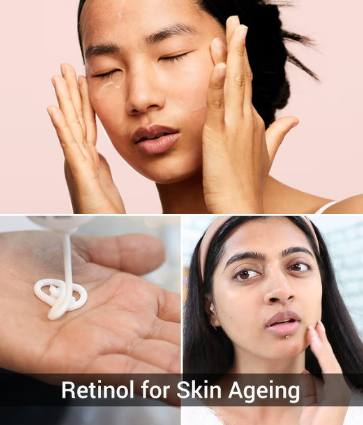
Retinol is often called the gold standard in skincare. From softening wrinkles to clearing acne and boosting collagen, this Vitamin A derivative has earned its place as a hero ingredient. But here’s the catch—retinol is powerful, and that power comes with a learning curve. Pair it with the wrong ingredients, and instead of glowing skin, you might end up with peeling, redness, or stubborn irritation.
Let’s dive into what not to mix with retinol, why those combos backfire, and how to use this superstar ingredient safely.
Understanding Retinol and Why It’s So Effective
Before we talk about the don’ts, let’s get clear on the do’s. Retinol works by converting into retinoic acid once applied to your skin. This form encourages skin cells to shed faster while stimulating collagen production. The result? Smoother skin, fewer fine lines, and improved texture.
Think of retinol as a personal trainer for your skin. It pushes your skin cells to work harder and renew faster, but just like any workout, overdoing it—or mixing it with the wrong “supplements”—can cause injury instead of progress.
Exfoliating Acids (AHAs & BHAs): Double the Trouble
Exfoliators like glycolic acid, lactic acid, and salicylic acid already remove dead skin cells. Pairing them with retinol means you’re essentially forcing your skin through a bootcamp with no rest days. The result? Over-exfoliation, dryness, and an angry skin barrier.
Instead, alternate. Use acids on nights when you’re skipping retinol, or use them in the morning with SPF while saving retinol for bedtime.
Vitamin C: A Clash of pH Levels
Vitamin C is fantastic for brightening and protecting against free radicals. But here’s the problem—Vitamin C (especially L-ascorbic acid) works best in an acidic environment, while retinol prefers a more neutral pH. Together, they cancel each other out.
The solution? Time them differently. Apply Vitamin C in the morning for antioxidant protection, and retinol at night for repair. That way, both can shine without stepping on each other’s toes.
Video : Avoid these retinol mistakes | dermatologist explains
Benzoyl Peroxide: Too Harsh of a Partner
If you struggle with acne, you’ve probably used benzoyl peroxide. It’s a bacteria-killer that dries out pimples fast. But pair it with retinol, and you’re stacking two powerful, drying ingredients. This can strip your skin, leading to redness, peeling, and sensitivity.
Instead, rotate. Use benzoyl peroxide on one night, retinol on the next. Think of it as giving your skin a break while still tackling acne effectively.
Physical Exfoliants: Scrubbing Trouble In
Scrubs, brushes, or sponges might seem like a good way to smooth skin, but combined with retinol, they’re a recipe for raw, inflamed skin. Since retinol already accelerates exfoliation, adding abrasive tools is like sanding down an already-thin surface.
Choose gentle cleansing instead. A mild, hydrating cleanser paired with retinol is enough to keep skin clean without the harshness.
Hydroquinone: Too Much of a Good Thing
Hydroquinone fades dark spots, while retinol improves overall skin tone. Sounds like a dream duo, right? Not so fast. Both are strong actives, and using them together can overwhelm your skin, causing peeling and severe irritation.
If you need both, talk to a dermatologist about spacing or alternating them. Your skin will thank you.
Essential Oils & Fragrances: Hidden Irritants
Tea tree oil, citrus oils, or heavily fragranced products might sound appealing, but with retinol, they’re a bad mix. Essential oils can trigger allergic reactions or increase photosensitivity. Fragrance-heavy products, whether synthetic or natural, often contain alcohols or chemicals that dry out the skin—exactly what you don’t want with retinol.
Play it safe with fragrance-free products. The simpler the formula, the better your skin will respond.
General Tips for Using Retinol Safely
- Start slow: Begin with once or twice a week, then increase frequency as your skin adjusts.
- Hydrate: Pair retinol with a nourishing moisturizer rich in ceramides or hyaluronic acid.
- Protect: Retinol makes your skin more sensitive to the sun. Sunscreen isn’t optional—it’s mandatory.
- Patch test: Always try a small area first, especially if you have sensitive skin.
Video : Skincare Ingredients You CAN’T Mix?! | Doctorly Investigates
Conclusion: Mastering Retinol Without the Burn
Retinol is like a powerful engine—it can transform your skin, but it needs the right fuel and care. Mixing it with the wrong ingredients is like putting diesel in a sports car; the results can be disastrous. By avoiding harsh pairings like acids, benzoyl peroxide, or fragrance-heavy products, you’ll protect your skin while maximizing retinol’s benefits.
With patience, smart layering, and consistent sunscreen use, retinol can deliver exactly what it promises—healthier, smoother, and more radiant skin.


